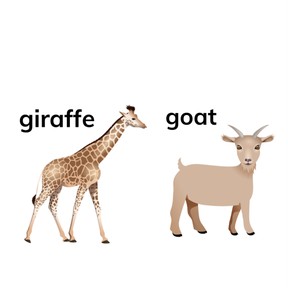
Hard and soft C and G
I can spell and read words with the hard and soft sounds of "c" and "g."



8,000 schools use Gynzy
92,000 teachers use Gynzy
1,600,000 students use Gynzy
General
In this lesson, students will learn the rules of hard and soft sounds of "c" and "g." They will identify words with those sounds that fit the rules, as well as any rule breakers.
Standards
CCSS.ELA-Literacy.RF.2.3e
Learning objective
Students will be able to spell and read words with the hard and soft sounds of "c" and "g."
Introduction
Students will review letter sounds by matching letters to beginning sounds of pictures, such as "f" to "frog." Explain how letters in some words do not make sounds they would expect.
Instruction
Students will listen to words with images below and give a thumbs up if they can hear the soft c sounds like /s/ in words like "fence" and "carrot." Next, students will listen for the hard sound "c" that sounds like /k/ in the words, "police," "cake," and "crocodile." They will also listen for the soft sound of "g" like /j/ in the words, "giraffe," "gold," and "bridge." They will listen for the hard "g" sounds like /g/ in the words, "dragon," "orange," and "game."
Students will identify words that follow the rule: "When the vowels e, i, and y follow c, they sound like /s/. They will also sort words based on the sound the "c" makes. Students will then identify words that follow the rule: When the vowels e, i, and y follow g, they sound like /j/. Students will distinguish between hard g and soft g words. Discuss rule breakers, like "gift" and "girl."
Quiz
Students will answer ten questions that review the hard and soft 'c' and 'g' sounds.
Closing
Students will recall what they learned about the hard and soft sounds of "c" and "g":
- Make the soft and hard C sounds.
- Make the soft and hard G sounds.
Students will play Bingo with words they studied in this lesson.
The online teaching platform for interactive whiteboards and displays in schools
Save time building lessons
Manage the classroom more efficiently
Increase student engagement
Discover more!
About Gynzy
Gynzy is an online teaching platform for interactive whiteboards and displays in schools.
With a focus on elementary education, Gynzy’s Whiteboard, digital tools, and activities make it easy for teachers to save time building lessons, increase student engagement, and make classroom management more efficient.



